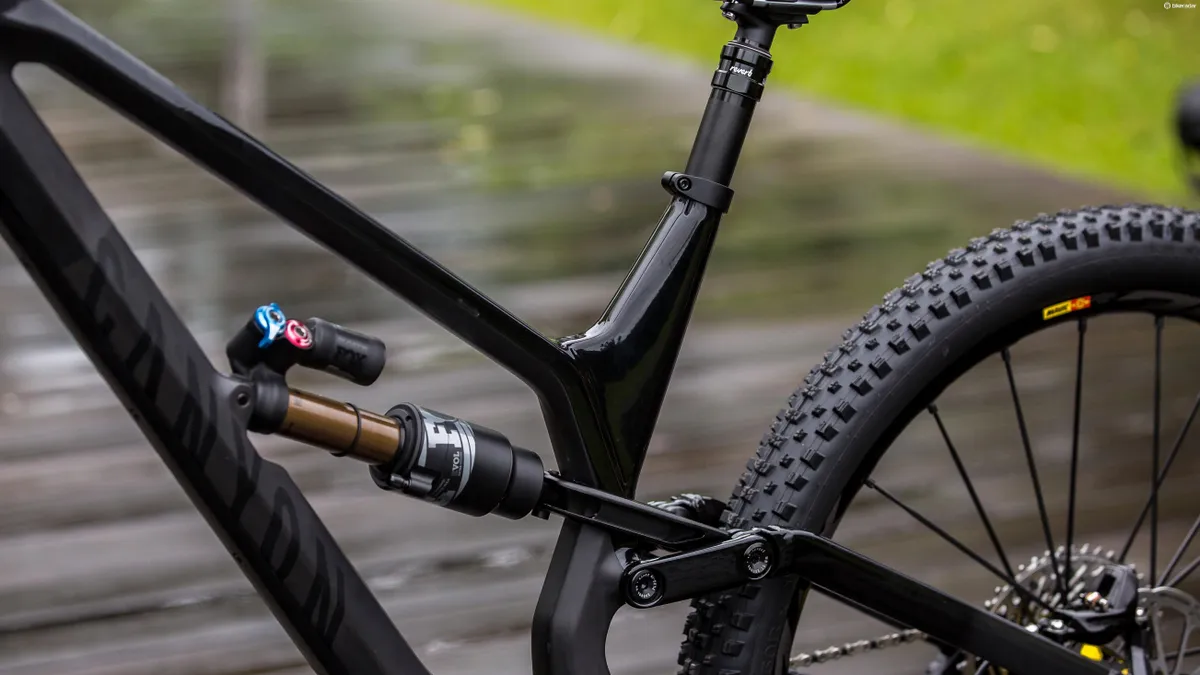Rising from the ashes is Canyon’s longer-travel all-mountain bike, the Torque, with 175mm of rear wheel travel paired with 180mm forks.
Is this Canyon's new enduro race bike? No, says the German brand – it’s a big-trail bike for big, rough trails and, if you like, bike parks too. That’s not to say it’s a slow bike though – Fabian Barel, a major part of Canyon’s R&D team, reckons he’s only 2.5 seconds per minute slower down the infamous San Romolo track than on his Sender DH bike. If you don’t know the San Romolo track, just imagine the rockiest, gnarliest, steepest, loosest DH track Italy has to offer.
If this was to be designated an enduro race bike, though, Canyon says it would have stuck faster 29-inch wheels on it — perhaps a hint of things to come.

Canyon Torque details
The Torque is a 175mm/180mm all-mountain bike with 650b wheels. Canyon is trying to homogenise the look of its longer travel bikes, and so the lines of the frame relate closely to those on the new Spectral and the Sender DH bike (which for 2018 will also come with pocket-friendlier alloy versions).
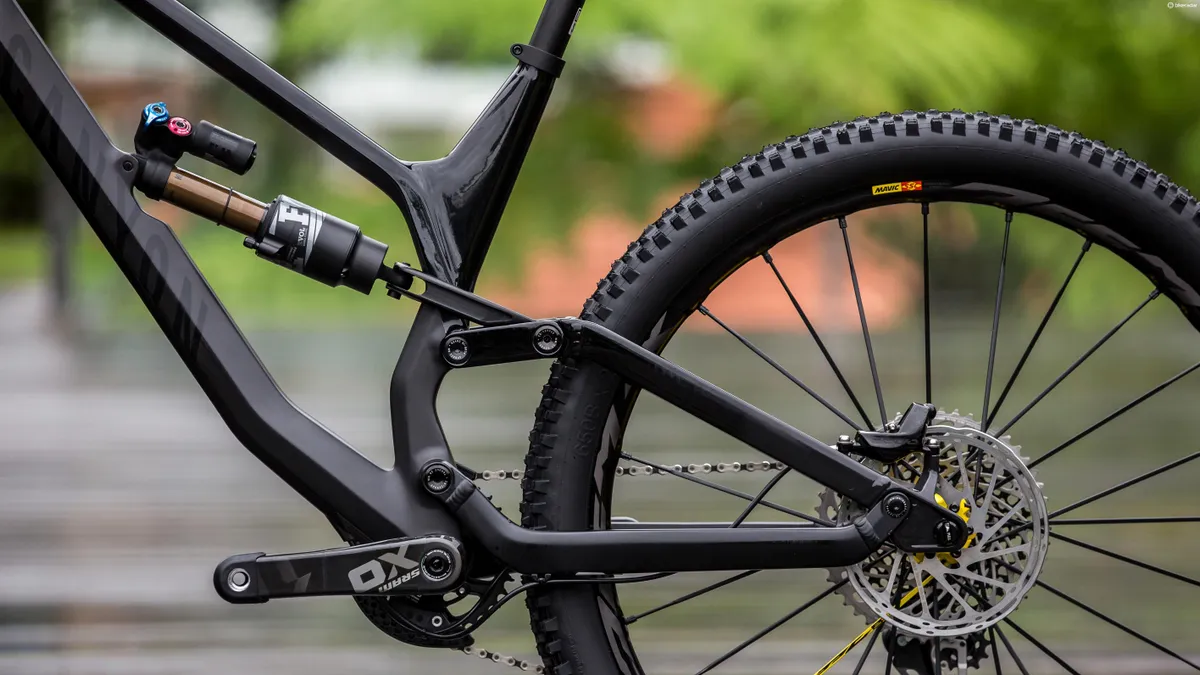
Bikes of this ilk are getting longer and slacker, across the board, but Canyon has stuck with relatively tried and tested geometry – a 460mm reach (size Large), 65.3-degree head angle, 74-degree seat angle and short 425mm stays.
The bikes are built with 40mm stems. It might be argued that this is relatively conservative compared to new bikes with a similar design, though there are plenty of people for whom a 'shorter' geometry works well.
In terms of suspension, the engineers have tweaked the leverage curve from the Sender to give a bit more mid-stroke support for pedalling and pumping the bike along the trail, combined with similar anti-squat figures from the Spectral, again to help that climbing ability. For more info on how suspension works, have a read of Seb’s rather extensive guide to mountain bike suspension.
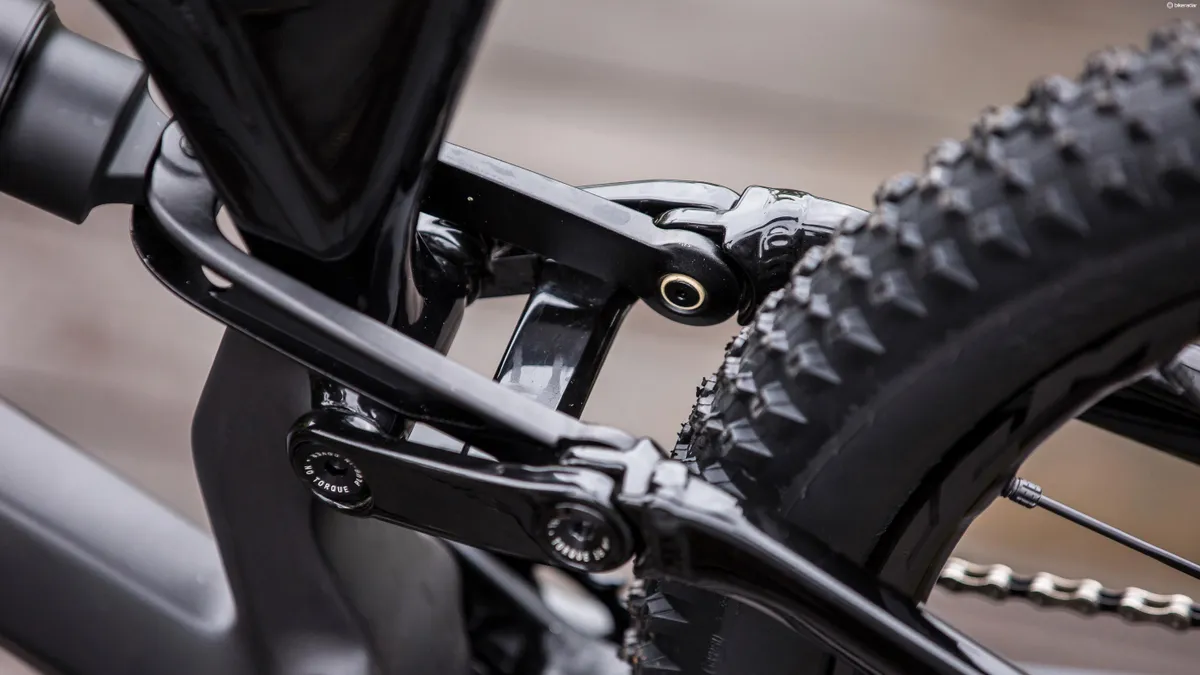
The linkage Canyon uses on the Torque is very similar to that of the Sender – though obviously with a slightly different tune to get it working better on what is a longer-travel trail bike, rather than a DH bike.
Canyon says that the new linkage system also allows it to get more standover height on its frames and shorter seat tubes to allow for longer dropper posts (150 on S and M, 170mm on L and XL). Canyon's also fitted a now almost-standard Metric-length shock, which tends to give better performance thanks to longer strokes and bigger air chambers, as well as having increased bushing overlap.
While geometry and suspension are key to how a bike actually rides, it’s fair to say that how the package is completed also has a big impact on what it’s like to actually own the bike.
It looks like Canyon has thought this through and the Torque shares a number of the features we saw on the new Spectral. In my eyes, the smartest of those is the Cable Channel system. The down tube has a plastic cover that runs along its length, which is removable with a few bolts. Not only does this offer some impact protection for the tubes, but it also holds the gear cables and brake hoses tight to the frame. It gives the clean look of internal routing, but the ease of maintenance of an external system. We’re stumped as to why we’ve not seen this before.
There are also mounts for an ISCG05 chain guide, a threaded bottom bracket and a women’s model with a slightly lighter shock tune. The XS-sized bike also comes with its own shock tune and a slightly different kinematic for lighter riders. Canyon reckons this XS size, along with the competitive pricing, should make it ideal for kids looking for a more aggressive or starter DH bike.

Canyon Torque models
There will be seven Torque models available, with some full-alloy frames and a few with carbon front and alloy rear ends.
The range starts with the AL 5.0 at 2200 Euros – this comes with a RockShox Yari fork, SRAM NX 11-speed gears and Guide RE brakes, DT Swiss wheels with Maxxis Minion 2.4in tyres, RaceFace and SDG finishing kit and a KS Lev Si dropper post.
The top full-alloy version is the AL 7.0, at €2,999, which has a Fox 36 Performance Elite fork, GX 11-speed gears and Code R brakes. Between them is the AL 6.0, costing €2,599, available in unisex and female versions.
The base carbon front/alloy back bike is the €3,499 CF 8.0 with a Lyrik RCT3 fork, GX 11-speed drivetrain, Code R brakes and a Reverb, while the top-level CF 9.0 Pro comes in at €4,999 with full Factory-level Fox suspension, XO1 Eagle gears, Deemax wheels and Claw/Charge 2.4-inch tyres from Mavic and SRAM Code RSC brakes.

So what’s it like to ride?
In all honesty, that’s difficult to say. I attended the launch hosted by Freeride Madeira, but the weather was, to put it lightly, savage. After two weeks of constant rain I, along with the rest of the press pack and the folks from Canyon, was hoping for better luck, but as we piled out of the vans on the first uplift, the heavens opened again.
All day we rode steep, muddy, rocky and rooty trails, as flat out as we dared, in torrential rain. In all honesty, I haven’t crashed so many times in a single day for a very long time! It was, however, hilarious.
Riding a fresh bike on unknown trails doesn’t always make it easy to glean a real feel for a bike, but when you add sketchy conditions, it makes it a whole lot harder.
That said, I did get a few things from the day (in between crashing, blinking mud out of my eyes, and slipping and sliding down the hillsides). The bike I rode was the top-spec CF 9.0 Pro.
The bike’s geometry is currently in the middle of the bell curve of all-mountain orientated bikes – it’s neither super long and slack, nor is it short, steep and tall. And that’s not necessarily a bad thing. Were it a race-focused bike, I’d argue that extra length would be welcome, however for a bike that’s designed to be played about with in the woods, its average size helps you flick and manoeuvre the bike around.
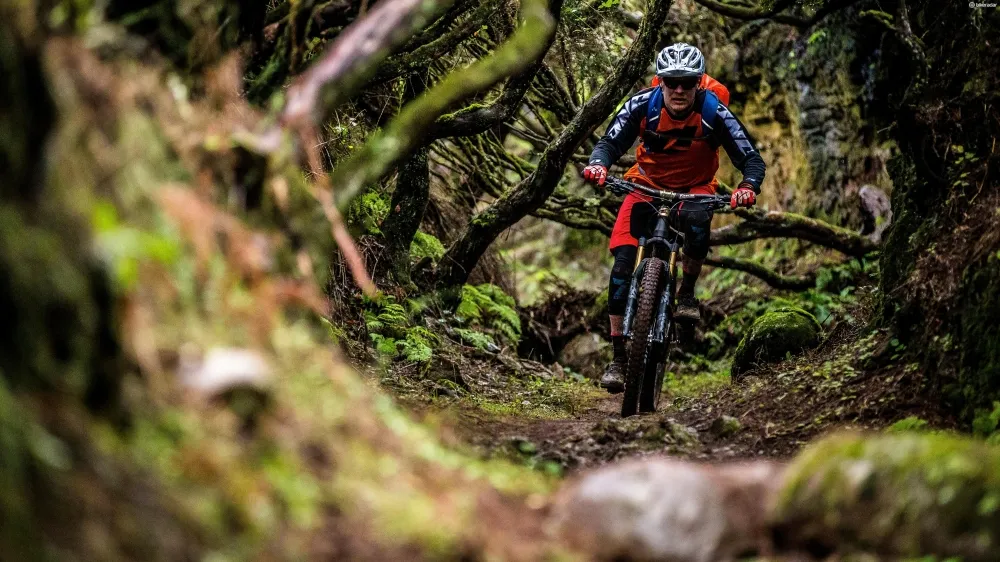
I do think though that in the context of all-mountain and enduro bikes, this will be considered a short bike in a year or two's time. Whether that matters comes down to your riding style and where you'll be riding the Torque most.
Canyon has done a good job with the rear suspension. It’s supple and soft early on, then noticeably ramps up in the mid stroke. There’s enough support and stability at and around the sag point for it to pedal with competence, and towards the end of the stroke it stays super composed.
On rough terrain it's possible to pump the bike through undulations, generating speed, and despite its 175mm of travel the Torque managed to avoid feeling sluggish or lazy, even on flatter tracks. There’s also very little noticeable pedal kickback when hitting square-edged hits, or when you plop unceremoniously off a step down.
The €4,999 Torque CF 9.0 Pro model I rode was kitted out, unsurprisingly, with a range of top-end parts: Fox 36 Factory and X2 shock, SRAM X01 Eagle gears, Reverb post and plenty of Canyon’s own finishing kit. It also came with Mavic’s Deemax Pro wheels, fitted with the French company's 2.5-inch Claw Pro and Charge Pro tyres.
The tyres' round profile isn’t entirely to my taste, certainly in the conditions I rode them in. But their relatively spiky tread did cut through the mud pretty well – if they were a touch squarer, they’d have a bit more shoulder tread to bite through during the turns. Canyon's new G5 range of components appeared in the cockpit – they performed as well as could be expected during my short test ride. Certainly the bar's shape, which is similar to that of a Renthal (5° upsweep, 8° backsweep) never felt odd during the ride.
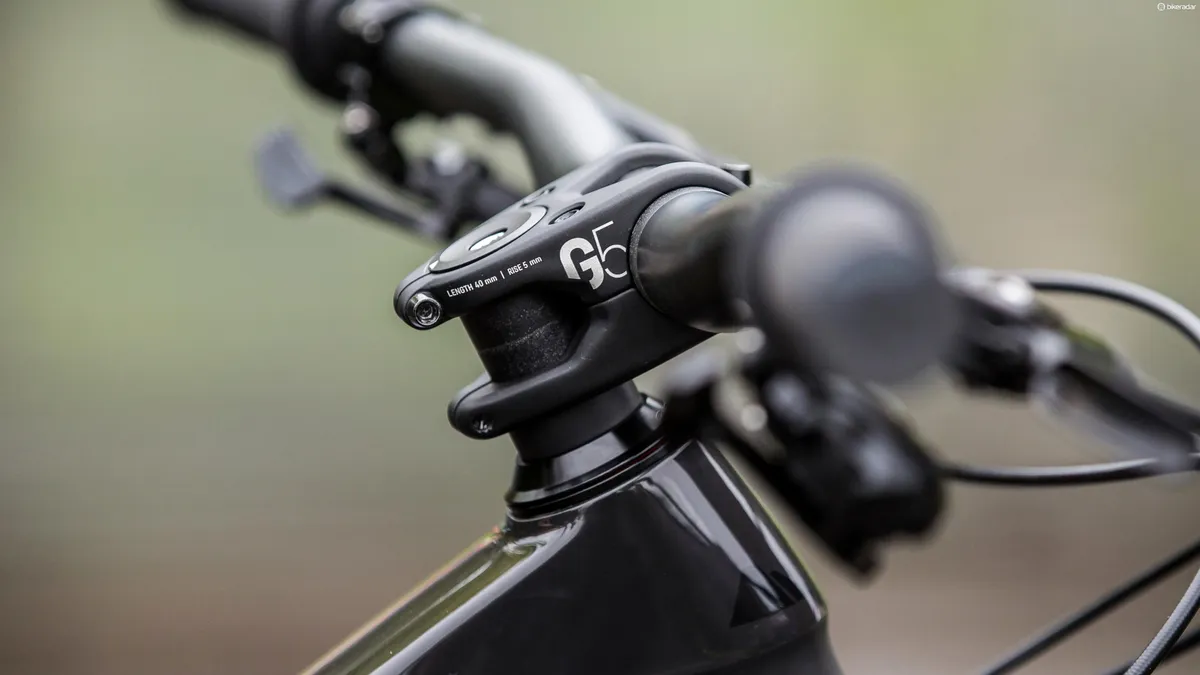
On initial impressions, it feels like Canyon has done a good job with the Torque. You can’t complain at the shape of the bike, nor the suspension. And, the kit you get for the money reinforces Canyon as one of the best-value bike suppliers out there.
I'm aching to get my hands on one here in the UK for more extensive testing and to get a real feel for what the bike is capable of.


